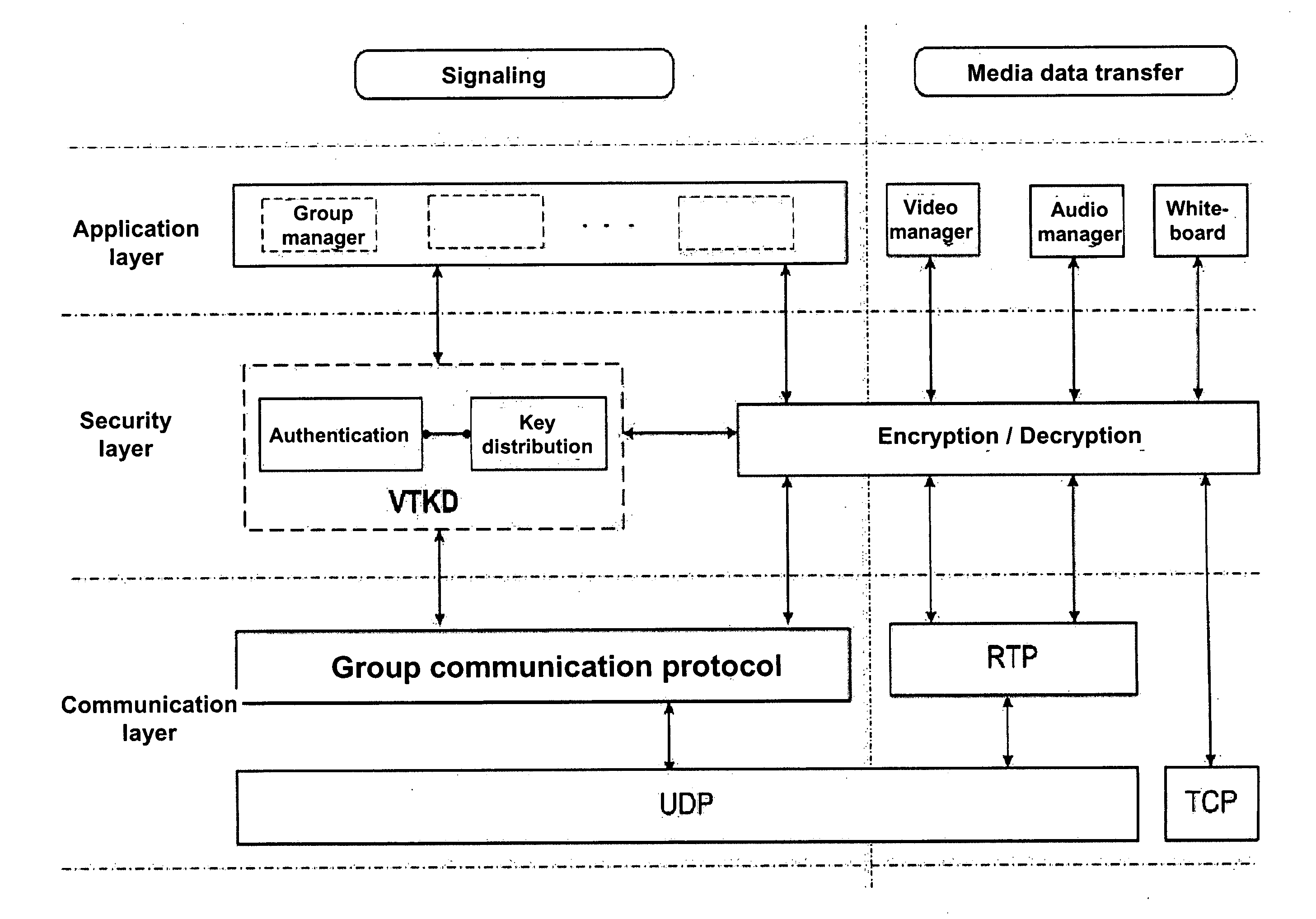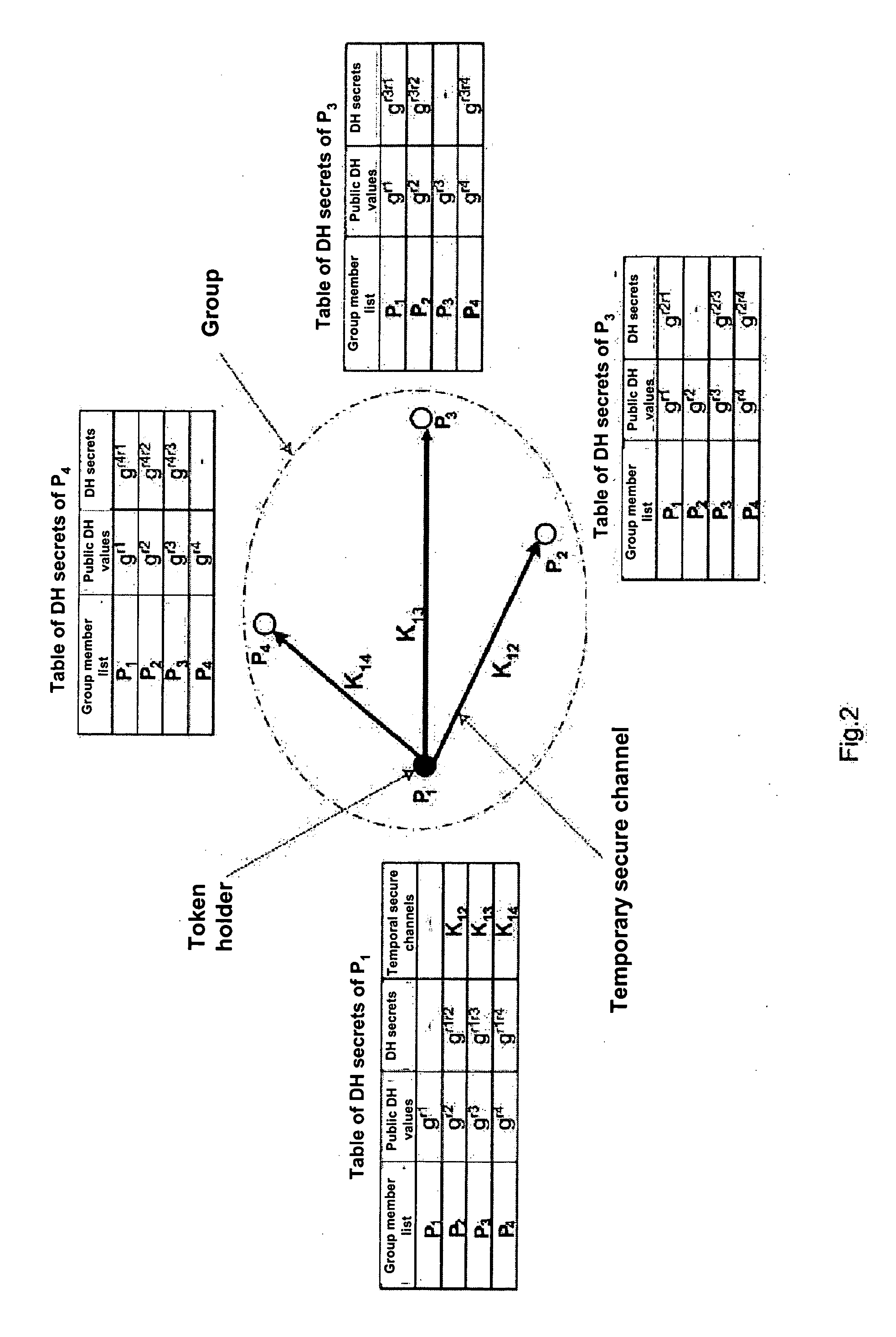Method for changing a group key in a group of network elements in a network system
a network element and group key technology, applied in the direction of user identity/authority verification, data switching by path configuration, digital transmission, etc., to achieve the effect of small computational and communication expenditur
- Summary
- Abstract
- Description
- Claims
- Application Information
AI Technical Summary
Benefits of technology
Problems solved by technology
Method used
Image
Examples
Embodiment Construction
[0032]The invention will now be described by way of exemplary embodiments with reference to a drawing, where:
[0033]FIG. 1 is a schematic representation of a system architecture of a network system;
[0034]FIG. 2 is a schematic representation for explaining a method in the context of a key renewal;
[0035]FIG. 3 is a schematic representation for explaining a joining of a group of network elements by a new network element;
[0036]FIG. 4 is a schematic representation for explaining a procedure taking place when a network element leaves the group of network elements;
[0037]FIG. 5 is a graphical representation to compare the delay during the key renewal as a function of the size of the group of network elements for different methods; and
[0038]FIG. 6 is a graphical representation to compare the delay during the key renewal for different methods when a network element leaves the group of network elements.
[0039]A method for changing a group key in a group of network elements P1 . . . Pn (n=2, 3, ....
PUM
 Login to View More
Login to View More Abstract
Description
Claims
Application Information
 Login to View More
Login to View More - R&D
- Intellectual Property
- Life Sciences
- Materials
- Tech Scout
- Unparalleled Data Quality
- Higher Quality Content
- 60% Fewer Hallucinations
Browse by: Latest US Patents, China's latest patents, Technical Efficacy Thesaurus, Application Domain, Technology Topic, Popular Technical Reports.
© 2025 PatSnap. All rights reserved.Legal|Privacy policy|Modern Slavery Act Transparency Statement|Sitemap|About US| Contact US: help@patsnap.com



